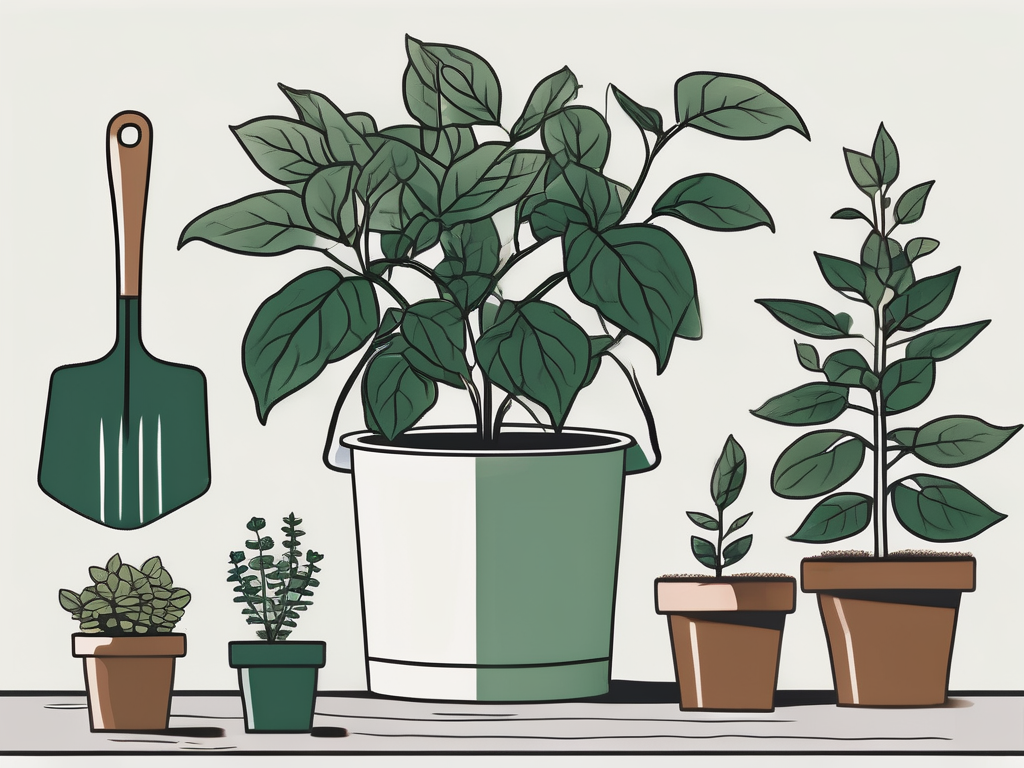
Rhaphidophora, with its stunning foliage and unique climbing habit, is a favorite among many plant lovers. Whether you're a seasoned plant parent or just embarking on your green journey, propagating Rhaphidophora can be a rewarding experience. It's not only a great way to expand your plant collection but also an opportunity to share your love for plants with friends and family.
This post will guide you through the propagation process, providing you with practical steps and tips to ensure success. We'll cover everything from choosing the right plant and tools to the different propagation methods you can try at home. Let's get started!
Understanding Rhaphidophora
Before diving into propagation, it's essential to understand a bit about the Rhaphidophora plant. Known for their striking leaves, these plants are native to Southeast Asia and the Pacific Islands, thriving in humid and tropical environments. The most popular species, Rhaphidophora tetrasperma, is often mistaken for a Monstera due to its similar leaf shape, but it’s actually a separate genus.
Rhaphidophora plants are climbers, meaning they naturally grow by attaching themselves to trees or other structures. This characteristic makes them excellent candidates for propagation, as they tend to produce plenty of nodes and aerial roots, which are crucial for successful rooting. Understanding these unique traits will help you successfully propagate and care for your Rhaphidophora.
Choosing the Right Plant
The first step in propagating Rhaphidophora is selecting a healthy parent plant. A robust plant not only increases the chances of successful propagation but also ensures that the new plants will be healthy and vibrant. When choosing a plant, keep an eye out for these signs:
- Vibrant Foliage: Look for leaves that are green and free from discoloration or damage.
- Strong Stems: Choose a plant with sturdy stems that aren't wilting or drooping.
- Healthy Roots: If possible, check that the roots are white or light brown and not mushy or dark, indicating root rot.
Once you've found the right plant, it's time to gather the necessary tools and materials for propagation.
Gathering Your Tools and Materials
To propagate Rhaphidophora, you'll need a few basic tools and materials. Having everything ready before you start will make the process smoother and more enjoyable. Here's what you'll need:
- Sharp Scissors or Pruning Shears: Clean and sharp tools are essential for making clean cuts, reducing the risk of infection.
- Potting Mix: A well-draining mix is crucial. Consider a mix of peat, perlite, and orchid bark to mimic the plant's natural environment.
- Containers: Use small pots or containers with drainage holes to start your cuttings.
- Rooting Hormone (Optional): While not necessary, rooting hormone can help speed up the rooting process.
- Water: Clean, room-temperature water for both cleaning tools and watering your cuttings.
With these tools and materials in hand, you're ready to move on to the actual propagation process.
Cutting and Preparing the Stem
Now comes the exciting part—taking cuttings from your Rhaphidophora plant. This step requires a bit of precision, but with a little practice, you'll get the hang of it. Follow these steps to prepare your cuttings:
- Identify a Healthy Stem: Look for a stem that has at least two to three leaves and nodes. Nodes are the small bumps on the stem where leaves and roots grow.
- Make the Cut: Using your clean scissors or pruning shears, make a cut about half an inch below a node. Ensure the cut is clean and sharp to promote healthy root growth.
- Remove Lower Leaves: Carefully remove the leaves near the bottom of the cutting, leaving one or two leaves at the top. This helps the plant focus its energy on root development.
- Optional: Apply Rooting Hormone: Dip the cut end of the stem into rooting hormone to encourage faster rooting.
With your cuttings prepared, you're ready to move on to the rooting process.
Rooting in Water
One popular method for propagating Rhaphidophora is rooting in water. It's a fantastic way to watch the roots develop and ensure they're healthy before planting. Here's how to do it:
- Choose a Container: Select a glass or jar that can hold your cutting securely without tipping over.
- Fill with Water: Add enough room-temperature water to submerge the nodes but avoid covering the leaves. This encourages root growth without risking rot.
- Place the Cutting: Insert the cutting into the container, ensuring the nodes are submerged in water.
- Change Water Regularly: Change the water every few days to prevent bacteria growth and keep it fresh.
- Monitor Root Growth: Within a few weeks, you should see roots developing from the nodes. Wait until the roots are at least a couple of inches long before transferring to soil.
This method is not only effective but also a fun way to engage with the propagation process.
Planting in Soil
Once your Rhaphidophora cuttings have developed strong roots, it's time to plant them in soil. This step is crucial for helping the plant establish itself and continue growing. Follow these steps for successful planting:
- Prepare the Pot: Choose a pot with drainage holes and fill it with your well-draining potting mix.
- Create a Hole: Use your finger or a tool to create a small hole in the center of the pot for the cutting.
- Insert the Cutting: Gently place the cutting into the hole, ensuring the roots are covered with soil. Press the soil around the cutting to secure it in place.
- Water Thoroughly: Water the soil until it's evenly moist but not soggy. Ensure excess water drains out to prevent root rot.
- Provide Support: If needed, use a small stake or trellis to support the cutting as it grows.
With the cutting now in soil, provide regular care to help it thrive.
Caring for Your New Plants
Now that your Rhaphidophora cuttings are planted, ongoing care is essential for their growth and health. Here are some tips to keep your new plants thriving:
- Light: Place your plant in a spot with bright, indirect light. Avoid direct sunlight, which can scorch the leaves.
- Water: Keep the soil consistently moist but not waterlogged. Allow the top inch of soil to dry out between waterings.
- Humidity: Rhaphidophora loves humidity, so consider misting the leaves or placing a humidifier nearby.
- Fertilizer: Feed your plant with a balanced houseplant fertilizer every month during the growing season.
By following these care tips, your Rhaphidophora will grow healthy and strong, adding beauty to your home.
Troubleshooting Common Issues
Even with the best care, you might encounter some issues while propagating or growing Rhaphidophora. Here are a few common problems and how to address them:
- Yellowing Leaves: This can be a sign of overwatering. Ensure your plant has good drainage and adjust your watering schedule.
- Wilting or Drooping: Underwatering or low humidity might be the cause. Check the soil moisture and increase humidity if needed.
- Slow or No Root Growth: If your cutting isn't rooting, try changing the water more frequently or using a rooting hormone.
Addressing these issues promptly will help keep your Rhaphidophora healthy and thriving.
Sharing Your Success
Once you've successfully propagated your Rhaphidophora, consider sharing the joy with others. Here are some ways to spread the plant love:
- Gifts: Give a propagated plant to a friend or family member as a thoughtful gift.
- Plant Swaps: Join local plant swaps to exchange cuttings and expand your collection.
- Online Communities: Share your propagation success on social media or plant forums to inspire others and connect with fellow plant lovers.
Sharing your plant journey can be a wonderful way to connect with others and spread your passion for greenery.
Final Thoughts
Propagating Rhaphidophora is a delightful process that allows you to grow your plant collection and share your love for plants with others. From choosing the right plant to caring for your new cuttings, each step is a rewarding part of the journey.
At Cafe Planta, we’re here to support you on your plant journey. Whether you’re looking for unique houseplants or need advice on plant care, we’d love to hear from you. Feel free to email us or reach out on Instagram. Let’s grow together and create beautiful, thriving plant collections in our homes.












